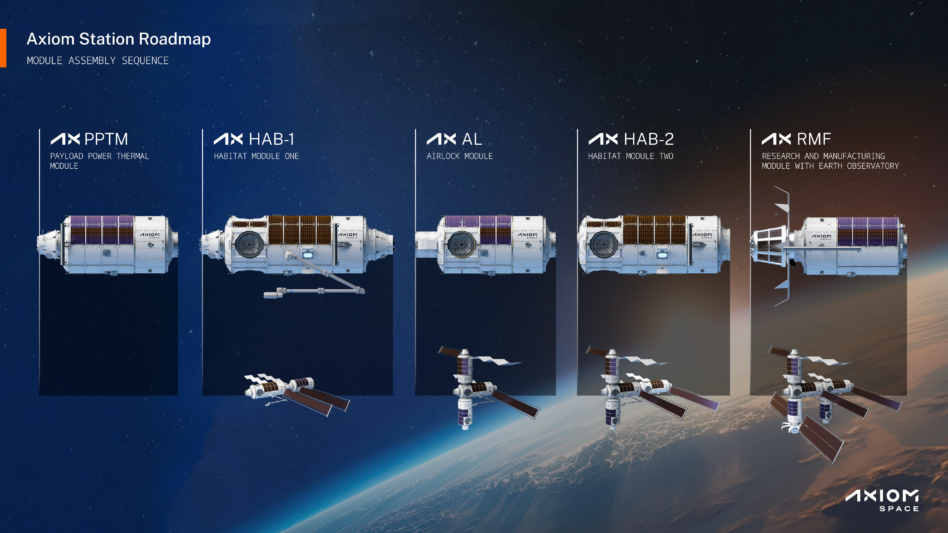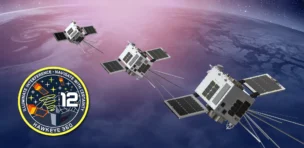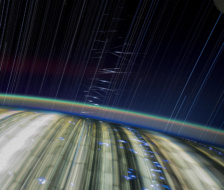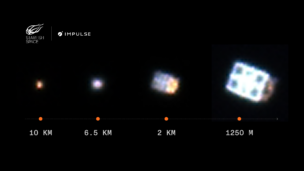Houston, TX—Axiom Space is reshuffling its space station module deployment plan at NASA’s request, installing a power module on the ISS in early 2027 instead of its habitat module.
Roughly nine months later, that module—dubbed the Payload, Power, and Thermal Module (PPTM)—will undock from the ISS and rendezvous in orbit with Axiom’s habitat module (Hab One) to create an independent two-module station by early 2028.
Axiom originally planned to detach from the ISS in 2030 with four modules.
“Our station has always been designed to be modular, where we can add modules and rearrange the sequence,” Matt Ondler, Axiom’s chief strategy officer, told Payload.
Why the change? NASA requested the change due to ISS deorbit timing, the station’s need to support the SpaceX deorbit vehicle, and the desire to maximize the amount of ISS equipment and science that the agency could salvage, Axiom officials said.
- Timing: With the ISS set to decommission by 2030, there is an increased urgency to get Axiom’s station up and running—even in a smaller configuration.
- ISS deorbit: Axiom’s Hab One module and SpaceX’s deorbit vehicle were both intended to attach to the same port (forward port), which would have required costly and time-consuming adapter switches to accommodate both spacecraft. The PPTM will use a different ISS port (Node 1 or 2 nadir port), allowing the module to coexist with the deorbit vehicle and simplify the traffic pattern.
- Equipment transfer: NASA and other ISS partners will use the PPTM to save expensive research equipment ahead of deorbit. The PPTM will have significantly more storage capacity for ISS equipment compared to Hab One.
“This is a win-win for everybody here,” George Motter, Axiom stations’ chief engineer, told Payload. “This is a win for ISS, where they don’t have to make that reconfiguration. We can also arrive and leave on a schedule that meets both ISS’s needs and Axiom’s.”
An accelerated station: From Axiom’s perspective, the pared-down architecture simplifies development and expedites independence from ISS, allowing the company to achieve a viable station two years earlier than planned. Axiom will attach an airlock, Hab Two, a research and manufacturing facility, to the station in subsequent years.
Hot Swap
In 2020, NASA awarded Axiom a $140M contract to attach a habitat module to the ISS by 2026. The company contracted out the Hab One structure build to Thales Alenia Space in Italy. The construction was nearing completion and getting ready for shipment to Houston for outfitting when NASA and Axiom finalized the shift to the power module.
Sharing resources: To build the PPTM structure, Thales Alenia will now repurpose sections of Hab One and Hab Two (which had begun construction). Axiom plans to ship PPTM to Houston for integration in fall 2025.
“Because we’re reusing 85% of the stuff—and in some cases simplifying [the build] because we won’t need all of the life support for the first module—we can still launch that first module in early ’27,” Ondler said.
Thales Alenia will then backfill Hab One and Hab Two section elements. In the end, the sequence change increases Thales Alenia’s build contract from two modules to three modules.
The Cost of Building a Station
The company is building core capabilities such as software, engineering, environmental control, & life support systems, and some internal structures in-house. However, to get the modules up as fast as possible, and within budget, Axiom has outsourced larger development projects like structure build and various subsystems.
“Generally we believe in vertical integration. It allows you to control schedule and cost and allocate resources,” Ondler said. “We have vertically integrated the engineering piece, and that’s because we want to be able to build modules for a long, long time.”
Liquidity questions: According to a recent report, the company has been struggling to manage liquidity and pay bills, setting off alarm bells at NASA, given Axiom’s work on two critical human spaceflight contracts: the station module port award and its AxEMU lunar space suit contract.
“We’ve raised the amounts that we wanted to, just not quite in the time period that we wanted,” Ondler said, adding the company has recently secured additional funding.
Axiom has 450 employees working on the station and close to 300 working on suits.
Development costs: The cost to build a four-module station is around $3B—with each module costing roughly $300M, and engineering expenses accounting for the remainder—Axiom told Payload. A pared-down two-module station would obviously cost less, though the exact figure isn’t yet clear. For reference, ISS development and construction cost roughly $100B.
CLD 2: Axiom’s station dreams could hinge on winning the fiercely competitive Commercial LEO Destinations (CLD 2) award, NASA’s initiative to support the development of a commercial station to replace the ISS by 2030.
NASA followed up the 2020 Axiom port award with the first CLD contracts in 2021. For CLD, Axiom will compete with companies like Blue Origin, Vast, Sierra Space, SpaceX, and Voyager.
- The winner(s) of CLD 2 will receive additional NASA funding, support, and certification, positioning them as the frontrunner to host agency astronauts.
- NASA will pick the winner(s) in 2026, but it is still to be determined whether it will pick one or two stations or if there will be subsequent awards.
“I’d say, just based on NASA’s recent philosophy and cultures, I think they’ll select two,” Ondler said. “And then compete for task orders.”
New administration: NASA and Congress have been eager to get a commercial station up and running before the ISS retires to ensure the US maintains a continuous human spaceflight presence in LEO, particularly as China’s presence at its Tiangong station expands.
It’s still TBD whether President-elect Donald Trump and his pick to lead NASA, Jared Isaacman, will prioritize or deprioritize CLD. On the one hand, if NASA chops the costly SLS program, billions of dollars could open up for other initiatives—on the other hand, that money could be DOGE’d out of the NASA budget altogether.
“Ultimately, the NASA contract will probably be 5% of what it costs to build our station,” Ondler said. “NASA adding another 5% wouldn’t be bad. Wouldn’t hurt our feelings.”




